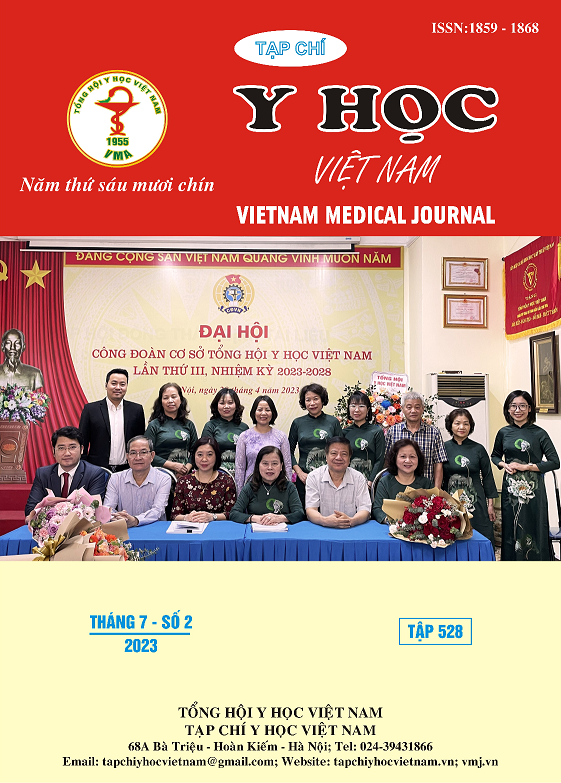CLINICAL, PARACLINICAL CHARACTERISTICS AND RELATIONSHIP WITH HISTOPATHOLOGIC FEATURES IN HEPATITIS B VIRUS-RELATED HEPATOCELLULAR CARCINOMA PATIENTS OPERATED AT NATIONAL CANCER HOSPITAL- TAN TRIEU
Main Article Content
Abstract
Objectives: To evaluate the clinical, paraclinical histopathological characteristics and the relationship of these characteristics in hepatitis B virus-related hepatocellular carcinoma patients operated at National Cancer Hospital- Tan Trieu from 2018 to 2020. Subjects and research methods: A cross-sectional descriptive study on 41 patients with hepatitis B virus-related hepatocellular carcinoma who underwent surgery. Results: The age group 50 - 69 accounts for the majority of 70.7%; the male to female ratio was 3,1/1. Clinical symptoms: right lower quadrant pain was 65.9%, fatigue was 22.0%; periodic health examination was 26.8%. AFP-negative (<20 ng/ml) rates were found in 41.5% patients. Tumor size ≥ 5cm accounted for 43.9%, group one tumor accounted for 71.6, and the majority was in the right lobe, 68.3%. Pathological characteristics: Most tumors had tumor cell differentiation grade II 63.4%, grade III 31.8%, 100% stromal invasion and 24.4% vascular invasion. AFP levels are associated with poor tumor cell differentiation and vascular invasion. Tumor size was related to poor tumor cell differentiation but not to vascular invasion in the histopathology. Conclusion: Patients with HBV-infected hepatocellular carcinoma had a large proportion of cases incidentally discovered by periodic health examination, large tumor size, and mostly moderate to poorly differentiated cell differentiation. Tumor cell differentiation is closely related to AFP levels and tumor size; Vascular invasion in histopathology was only related to AFP levels and not to tumor size.
Article Details
Keywords
Hepatocellular carcinoma (HCC), histopathologic features, hepatitis B virus infection.
References
2. Schlageter M., Terracciano L. M., D'Angelo S. et.al. (2014). Histopathology of hepatocellular carcinoma. World J Gastroenterol, 20 (43), 15955-15964.
3. Bosman F. T., Carneiro F., Hruban R. H. et.al. (2010). WHO classification of tumours of the digestive system, Geneva 27, Switzerland.
4. Yu M. W., Chen C. J. (1993). Elevated serum testosterone levels and risk of hepatocellular carcinoma. Cancer Res, 53 (4), 790-794.
5. Thái Doãn Kỳ (2015). Nghiên cứu kết quả điều trị ung thư biểu mô tế bào gan bằng phương pháp tắc mạch hóa chất sử dụng hạt vi cầu DC Beads. Viện Nghiên cứu Khoa học Y dược Lâm sàng 108.
6. Đào Việt Hằng (2016). Đánh giá kết quả điều trị ung thư biểu mô tế bào gan bằng đốt nhiệt sóng cao tần với các loại kim được lựa chọn theo kích thước khối u, Luận văn Tiến sĩ y học, Đại học Y Hà Nội.
7. Trần Ngọc Minh (2020). Nghiên cứu mô bệnh học và hóa mô miễn dịch tổn thương tiền ung thư và ung thư biểu mô tế bào gan, Luận án Tiến sĩ Y học, Đại học Y Hà Nội.
8. Wu G., Wu J., Wang B. et.al. (2018). Importance of tumor size at diagnosis as a prognostic factor for hepatocellular carcinoma survival: a population-based study. Cancer Manag Res, 10, 4401-4410.


